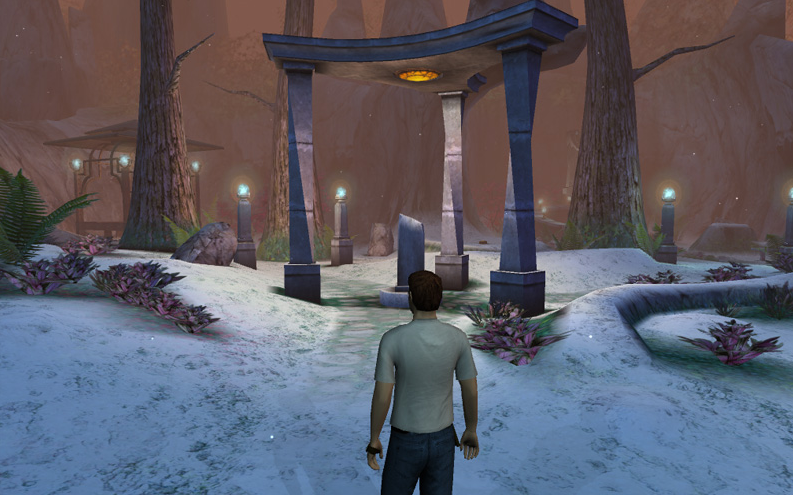
There is no explicit violence, no time limit and no threat of death the world of Myst is serene and designed to immerse players in its atmospheric presentation as they uncover the secrets of the mysterious island at their own pace. The player is presented with many puzzles that must be solved in order to progress, some of which are integrated into the environment and may not be immediately apparent as puzzles. Because all of the scenes were pre-rendered, the game's artists were able to portray the worlds of Myst as highly detailed 3D environments, which wouldn't have been possible if the game had instead been rendered in real-time. Myst's limited animations are videos embedded into these pre-rendered backgrounds, giving players a greater sense of immersion despite the limitations of CPU processing power available for the game's initial release. Players explore the world of Myst by clicking on sections of hundreds of static pre-rendered scenes, and can interact with certain objects in the world by clicking or dragging them with the mouse cursor. Myst's gameplay is exclusively point-and-click from a first-person perspective.

The original game became the basis for a highly successful media franchise that spawned four direct sequels, several spin-off games and three novels. After its release for IBM-compatible PCs in 1994, Myst quickly became the best-selling PC game of all time until The Sims broke its record in 2002. Myst was one of the first games released on CD-ROM and heavily contributed to the format's early success in terms of interactive software. This tool was capable of producing applications that function similarly to simple HTML webpages. The game was originally programmed in HyperCard, a "hypermedia" programming tool available for legacy Macintosh and Apple IIGS computers. Players explore a pre-rendered game world using a simplified point-and-click interface in order to solve puzzles and unravel the secrets of Myst, a deserted island connected to several other worlds via special " Linking books". It was developed by their company Cyan (later known as Cyan Worlds) and was originally published by Brøderbund in 1993 for Apple Macintosh computers. Rand and his brother, Robyn, compressed the image and audio data as much as they could so the game could run smoothly on 1x CD-ROM drives.Ĭyan Worlds co-founder Rand Miller goes behind the scenes of the development of one of the best selling PC games of all time, Myst.Myst is a puzzle adventure game designed by brothers Rand and Robyn Miller. “I had a really powerful Mac, with a lot of memory and a lot of hard drive space, and we were still working in mud,” said Rand, discussing the game’s performance early-on. The HyperCard-developed title ran into some snags when trying to run on the CD-ROM format. Myst was not only the largest collaboration Cyan had attempted at the time, but also took the longest to develop.Īccording to Rand Miller, the brothers spent months solely designing the look and puzzles of the Ages (other worlds), which were influenced by earlier whimsical “worlds” made for children. Since then several remakes and ports have released for other platforms, as well as spin-off novels and other media.

The game also helped drive adoption of the then-nascent CD-ROM format. Myst was the best-selling PC game for a while, until The Sims surpassed its sales in 2002. The game was first released for the Macintosh platform back in 1993. Myst is a graphic adventure puzzle game designed by Robyn and Rand Miller. Myst is one of the best-selling PC games of all time developed by Cyan Worlds.


 0 kommentar(er)
0 kommentar(er)
